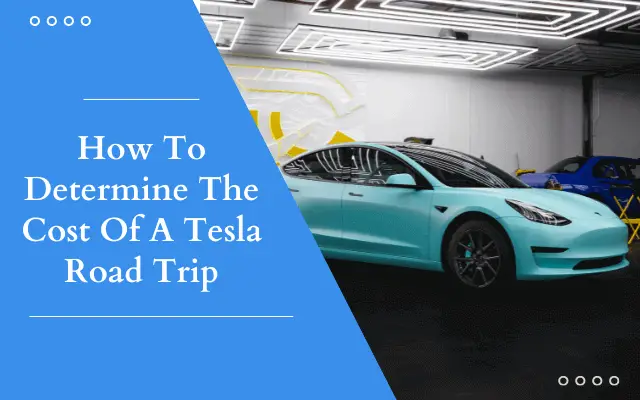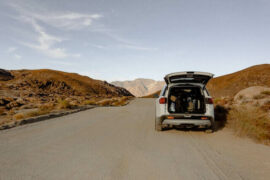Last Updated on January 24, 2024 by Rose Morah
In this article, we are going to discuss how to calculate the cost of a Tesla road trip and the factors that contribute to your Tesla road trip costs.
But before that, perhaps it’s worth mentioning that:
- It is cost-ineffective to constantly supercharge your Tesla on a road trip unless you have free unlimited supercharging.
- On most Tesla road trips, you will have you choose between saving time or money.
For instance, you will easily find free destination chargers but most of them will slow you down, especially if you are driving a Tesla Model X, which has a large battery.
Additionally, most hotels that offer free fast charging have pricey room charges compared to others within the same area or even within a few blocks.
N/B: Tesla provides Tesla owners with free destination chargers in some hotels (guests only).
- In some parts of the US, the charging cost may vary depending on the time of the day.
So, how do you calculate the cost of a Tesla road trip?
Steps:
- Map your route
- Find the current charging cost on your route
- Additional factors to consider
- Add up your charging costs
See also: How to Maximize Tesla Range & Reduce Battery Drain on Tesla.
1. Map your route
To find out the distance you will cover on your road trip, there are many Tesla trip planner apps that can help map your route.
| The cost of the road trip will mainly depend on your driving location. We have a detailed article on that here. |
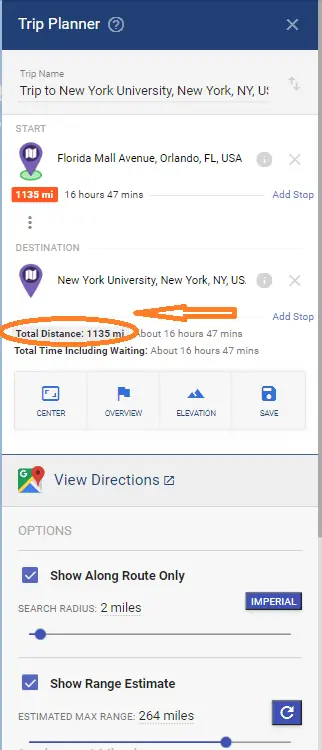
Some key things to remember when mapping your route;
- Include the small detours in between the trip
This is one thing that most people forget. But it makes a lot of sense, especially if the road trip is going to take several days.
So, ensure you have added the side trips for an almost accurate distance /cost of your road trip. But if it is a familiar route, you can always take a good guess.
- Check the type of road/terrain on your route.
It is easy to just map your route and find out the number of miles you will cover. But all that will be in vain if you fail to check the terrain. The terrain will determine the amount of money you will spend on charge because of high /low energy usage.
| From my experience after covering many miles on different road trips, a good rule of thumb is to always have an estimated charging cost before the trip. But on one particular road trip, I ended up spending an extra $70 on charge only. Later on, I realized that the cost went up because I was going in and out of the mountains. |
Related: 5 Tesla Supercharging Tips To Speed Up Your Charging Time On A Road Trip
2. Find the current charging cost on your route
A good Tesla route planner is able to give you an estimated charging cost for your trip.
This is extremely important because taking a road trip with your Tesla will require proper planning, especially if you don’t want to spend much on the road.
Having said that, the following are other key factors to consider when it comes to the charging costs:
1. Location
Different states have different charging costs. Much like the gas prices, some states have higher charging prices than others.
| I did two different trips in August 2023. One was in California, and the other one was in Texas. I covered almost the same miles on both trips, but I ended up spending more in California. The charging cost during my Texas road trip was very cheap! It was two times cheaper compared to the California road trip. |
Supercharger cost of our road trips this year
| Road Trip | Miles | Supercharger Cost | Our Original Estimated Supercharger Cost | |
| 1. | West Coast | 1706 miles | $150 | $145 |
| 2. | North NJ to Tampa Florida (Round trip) | 2500 miles | $200 | $200 |
| 3. | From Idaho to Bozeman, across Minneapolis, then down to Indianapolis. | 2130 miles | $190 | $199 |
| 4. | Drove across Colorado, Utah, California, & New Mexico | ~3000 miles | $410 | $405 |
| 5. | Vancouver to Vegas | ~3100 miles | $350 | $355 |
| 6. | Road trip across 7 states on the West Coast (1-month trip) | 5700 miles | $570 | $560 |
| 7. | Texas | 550 miles | ~$70 | $70 |
Check out the charging rates in different states below (These are not real-time charge rates)
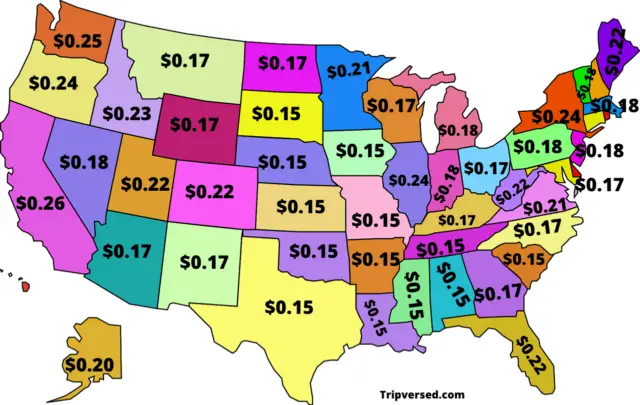
EV owners who live in New England including New Hampshire, Connecticut, Massachusetts, and Rhode Island paid double for each kWh of energy used than those living in Nevada, Tennessee, Texas, and Colorado. – Nick Kurczewski, car journalist – kbb.com
2. Time of the day
The charging cost may fluctuate during the day/night. This is mainly because the electric cost is high/low at different times of the day, depending on the location.
| NOTE: During our road trips, we noticed that the Supercharger rates do vary depending on the time of the day. In some locations, between 11 a.m. to 8 p.m., we were charged double the Supercharging rates. I also remember at one Supercharger where we had been charged 0.22 cents/kWh, but again paid 0.44 cents/kWh during a different time. |
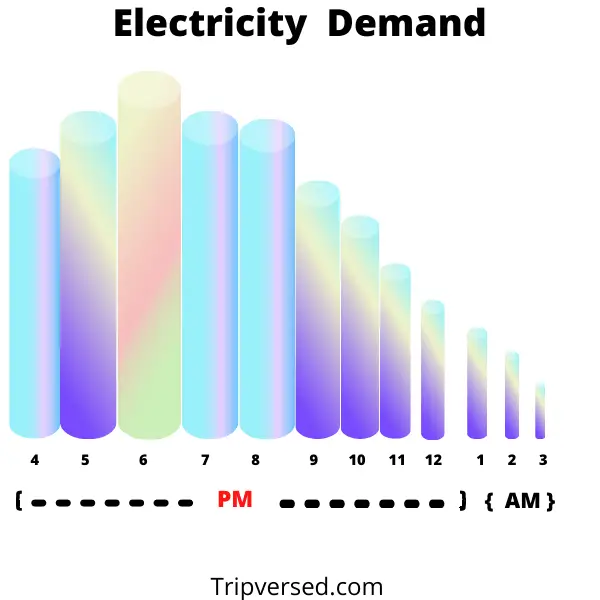
See also: Is Tesla Full Self-Drive Worth It?
3. Weather
You will pay more for the charge when traveling during cold weather or windy conditions.
This is because Tesla and other EVs have less range during the cold seasons. Additionally, you may also notice that your Tesla will sometimes lose charge while being parked, especially for long hours.
4. The number of people in the car and the weight of your luggage.
When it comes to luggage, only carry what’s necessary. This is because the more the weight, the more energy your Tesla will require to move.
More weight = More energy used.
More energy used= Frequent charging stops
Additionally, if you are not going to use your roof rack, be sure to remove it as well.
5. Speed
To maximize the range and charging cost on long trips, be sure to watch your driving speed or enable regenerative braking where necessary.
See also: Cool and Must-Have Tesla Model 3 and Y Accessories.
3. Other road trip costs
Other essential factors to consider when creating your Tesla road trip budget include;
- Unplanned expenses
These include car-related costs such as roadside assistance.
From experience, do not entirely trust the estimated remaining mileage on your trip!
I have had to pay for towing services after my Tesla ran out of juice in the middle of nowhere after it died before hitting zero. But I have also driven 6 miles past zero without my Tesla dying.
- Other expenses
Road tolls
To avoid this road trip expense, Tesla trip planner apps including the Tesla in-built trip planner can help you plan a route with no tolls. A Better Route Planner (ABRP)and PlugShare are also some of the best apps for this purpose.
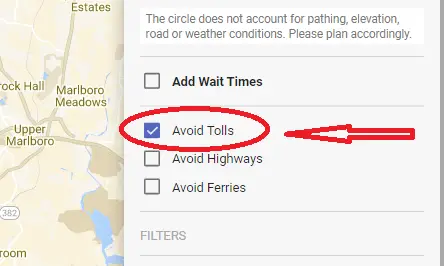
Hotel/lodging/camping sites
If you are on a budget, then you can comfortably sleep in your Tesla and have a great night of sleep on your road trip. Check out our article on how to camp in a Tesla like a pro.
Meals
If you are keen on getting your road trip cost, you will want to add meals to your daily road trip expenses.
Related: How To Calculate The Average Cost Of A Road Trip.
4. Add your charging cost
If you plan to use superchargers on your road trip, calculating the cost might be confusing because;
- Some supercharger stations will charge you in kWh and others in kW per minute.
- Others will charge you on per hourly basis.
- Some are free.
- Superchargers have varying power levels.
- It depends on your driving efficiency.
- It depends on the type of Tesla Model.
| The average cost of Supercharging in the USA is $0.28/kWh. Personally, supercharging cost me about 9 cents per mile. Most public chargers average between $0.15 kWh to about $0.30 kWh On a 3,125-mile road trip, my average supercharging cost was $6. The highest supercharging cost was $9.24. This was the longest charging time on my trip (about 40 minutes). The minimum charging cost on the trip was $2 for 10 minutes of charging time. The total charging cost for the trip was a total of $180. |
When calculating the charging cost, it is as simple as multiplying the cost per kWh by kWh used for charging.
N/B: You need to know your battery size (kWh)
| Tesla Model | kWh |
| Model Y | 75 kWh battery |
| Model 3 | 50 kWh battery |
| Model X | 100 kWh battery pack |
| Model S | 100 kWh battery pack |
Note, there’s going to be an extra cost for the energy lost when charging. Typically for DCFC, this is usually about ~95%.
| N/B: >>> Energy cost will vary depending on the number of EVs or Tesla’s charging on a shared charging station. |
See the Reasons Why Your Tesla Is Charging Slow At A Supercharger.
Check out also how to use Tesla J1772 Adapter at non-Tesla public charging stations.
Parking Fee Charges
Some charging stations will charge you a parking fee when charging. To know how much you will be charged, check out on the Tesla trip planner apps, such as PlugShare.
To add parking fee charges to your road trip cost, you can use this formula:
Hourly Parking Fee ($/hr) ÷ Charger Capacity (kW) = Energy Cost ($/kWh)
You can check Charger Capacity (kW) at the charging stops on your route planner app.
But perhaps this might take much of your time. The calculations will mostly apply to those who want to know how much it will cost to charge from home
So, to save you time, you can use a Tesla charge cost calculator to get your road trip cost.
As mentioned earlier, some route planner apps will also help you calculate your Tesla road trip cost.
Personally, I use A Better Route Planner (ABRP) or the Tesla in-built trip planner to get the cost of every charging station, then add up the total. See the screenshot below.
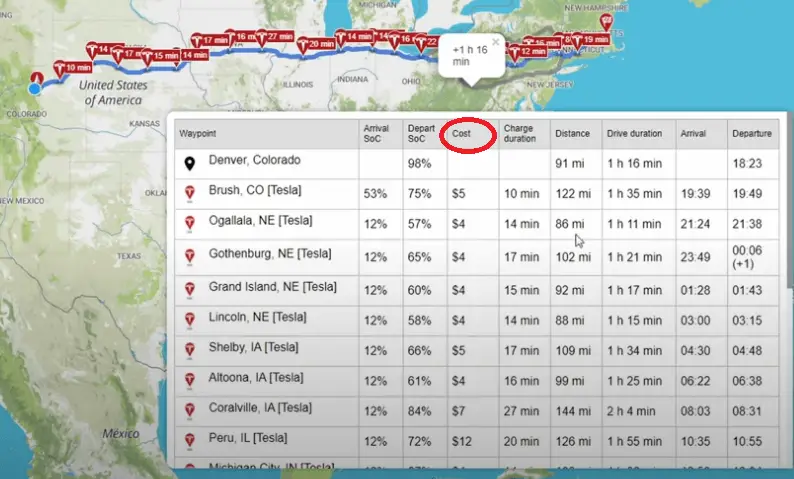
How to save on charging on a Tesla road trip
1. Take advantage of the promotions offered by charging networks in your routes to help you save on the charging costs.
2. Choose your charging stations wisely.
In case you’re not aware, some charging stations will charge more, others will offer the charge for free or at almost free charging rates.
Personally, when I’m planning my routes, I choose Volta chargers and ChargePoint because most of the time, I get free charging.
This is what I mean; see the screenshot below;
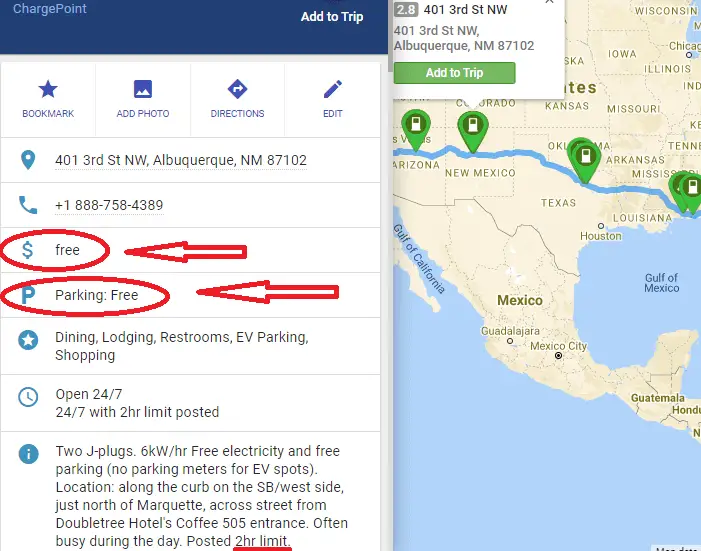
| N/B: The charging cost will always vary at the same charging network. This is mostly because the property managers and vendors set their preferred charging cost for their customers. |
3. Beware of the doubled charging prices.
Did you know that if you and another Tesla/EV owner are charging at a shared charging station, this may double your charging cost?
How?
Let’s assume, the shared charging station has 150 kW of power. Since you are sharing, this means that the supercharger may try to balance the power between the two charging cars, depending on the level of battery charge on each one of them. Your charging cost may increase since you are going to charge for longer.
| N/B: Normally, at a Tesla shared charging station, you will be charged about 13 cents per minute or half of their typical rates. (This only applies to Tier 1) |
What should you do?
Avoid shared superchargers or try to charge at an unoccupied charging station. However, if you have no option, don’t park close to the next charging car. This is, in fact, a Tesla/EV etiquette. Instead, just park at the furthest charging spot.
| The chargers are always labeled. For instance, if there are 10 superchargers and 5 rectifiers, this means that 2 Superchargers share one rectifier. So if someone is charging on 1A, do not pull over to charge at 1B. Instead, go to the next unoccupied charger. |
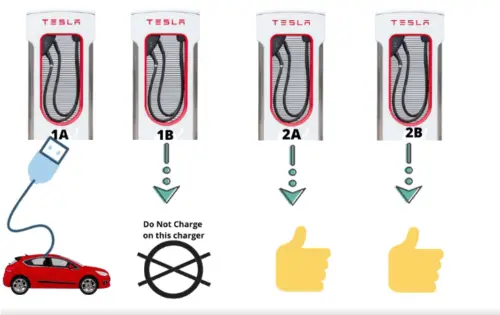
4. Be aware of the Tesla idle fees. Once the Tesla is fully charged, unplug it to avoid these extra fees.
| I remember being charged $1 per minute on idle fees while shopping after leaving my car. |
5. If you plan to take advantage of the Superchargers along your route, try to drive with a 10 to about 80% charge.
This means that you will arrive at a charging stop with a 10% charge and charge up to 80%.
From experience, the vehicle will charge fast when at a low charge compared to when the charge is at 50%.
However, when traveling during the cold season, I make sure I arrive with a 20% charge at my next charging stop and charge up to 80%.
This trick helps save money and time, especially in states where you are charged per minute.

